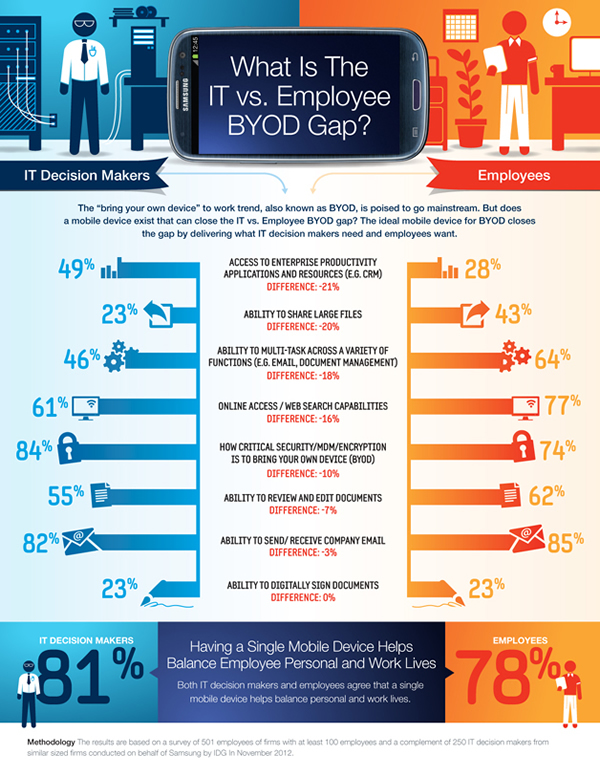One thing we do at CTS is help companies put together mobile device strategies, and a key part of that process are our mobile assessments. In our assessments, we get feedback from as many parts of the client organization as we can, and often we find that management has a certain set of needs, wants and expectations, which often differ from those of the rank-and-file employees. That’s why we try to get input from as many different people within the organization as we can: a mobile strategy that serves only part of the organization can often be worse than having no mobile strategy at all.
As I wrote in an earlier article, Samsung’s mobile division have been chasing after the enterprise market. Opportunities abound in the enterprise for the Apple/Samsung duopoly, what with the mass exodus from BlackBerry and a complete lack of interest in Windows Phone, despite their business-friendly features. In their pursuit of enterprise customers, they’ve been doing their homework and finding out what people at enterprises want in their BYOD programs, and their findings are summarized in the infographic above.
Note that in some cases, management and employees agree on what’s important to them in a BYOD program, while in other cases, there’s a fair bit of disagreement. Here are issues on which management and employees mostly agree:
- Having a single mobile device for both work and life helps maintain work/life balance.
- Being able to send and receive company email from a BYOD device is crucial.
- Equally crucial for a BYOD device is security.
- Also important: being able to access the web and review and edit documents with a BYOD device.
Here’s where management and employees disagree:
- Employees think that it’s important to be able to multitask across a variety of functions on a BYOD device; managers less so.
- Far more managers than employees believe that being to access enterprise productivity applications and resources on a BYOD device is important.
- Far more employees than managers believe that being able to share large files via a BYOD device is important.
These differences in opinion are to be expected; after all, the sort of work that management does is quite different from the rank-and-file, and vice versa. The lesson to be taken away from these observations is that when putting together a BYOD plan, you have to remember that a one-size-fits-all approach will often be unsuitable, especially in organizations with more than a few dozen people.
This article also appears in Mobilize!: The CTS Mobile Tech Blog.

One reply on “The Management/Employee BYOD Gap”
[…] This article also appears in Global Nerdy. […]